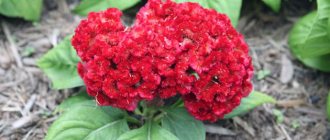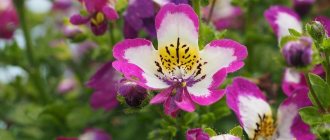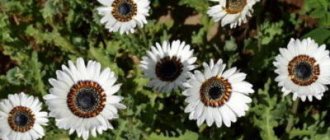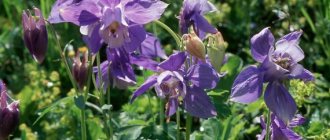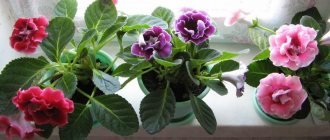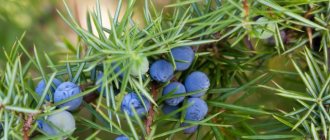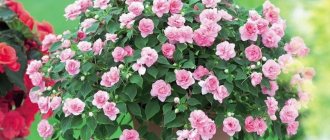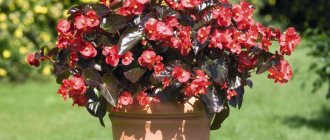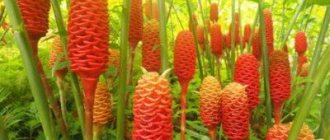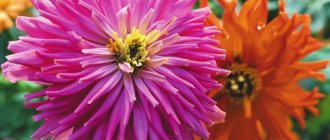Celosia belongs to the Amaranthaceae family. And its inflorescences are compared to a blazing fire (that’s why the flower was called “celosia”, translated from Latin as “blazing”). In nature, these flowering annuals and perennials are found on the African and American continents, as well as in Asian countries. In total, more than 55 species are known.
Celosia belongs to the Amaranth family
This plant is heat-loving, so while in warm regions celosia can be grown as a perennial, in colder regions it grows as an annual flower.
Flower growers value these flowering plants for the beauty and brightness of their inflorescences, which can take the form of combs or small bunches.
Flower growers value celosia for the beauty and brightness of its inflorescences.
Botanical description of celosia
Since these flowers cannot withstand air temperatures below 0⸰C, in most Russian regions these plants are grown as annuals. The stems of celosia are erect, well branched, the foliage is alternate, its shape can be ovate, ovate-lanceolate or linear-lanceolate. The flowers are small and can be collected in inflorescences of the following shape:
- spicate;
- comb;
- paniculata.
The colors of the petals are very diverse: from yellow and golden to orange and scarlet, as well as red or pink. The fruits are capsules in which many small seeds ripen.
Description and main characteristics
Celosia is a representative of the Amaranthaceae family, although not so long ago such a plant belonged to the Chenopodiaceae family. From Greek, celosia is translated as “burning”, “flaming”, which very well describes the color of the flower buds and the shape, which is more like flames.
Such velvety, exotic, curly flowers and unusual bright foliage can fully decorate any flowerbed on the territory of a summer cottage, and will also look good in a flowerpot, a separate container, a flowerpot, a mixborder, or in a dry bouquet.
Low flowers are used to decorate balconies, hanging pots, flower beds, carpet beds and boxes.
Tall varieties are usually used to decorate larger flower beds, ridges, mixborders, flower beds, and various landscape compositions in combination with decorative stones, shrubs and perennials.
The stems of this flower are branched, erect, the leaves are arranged alternately, linear-lanceolate, ovate-lanceolate, ovate. The small buds of the plant are collected in paniculate, spike-shaped or comb-shaped inflorescences of different colors - orange, red, yellow, pink, and scarlet. The fruit looks like a capsule with a large number of seeds.
The plant does not tolerate exposure to cold temperatures . For this reason, in regions with cold winters, this flower is usually grown as an annual, although there are also perennial shrubs.
How to grow celosia from seeds (video)
We also recommend reading:
16 most popular indoor plants Physalis: description of species and varieties, technology for growing from seeds Spruce in landscape design: the best ornamental varieties and characteristics of cultivation Kalanchoe: description of types and characteristics of care at home
Frequently asked questions about growing and care
Growing celosia from seeds and subsequent flower care does not require special skills. But sometimes questions still arise, so there are certain recommendations:
- You can reduce the acidity of the soil by adding slaked lime, dolomite or bone meal. Liming should be repeated every 8–10 years.
- In order for seedlings to quickly take root in a new place, their roots should be dipped in a growth and root formation stimulator when transplanting.
- In order for seedlings to grow stronger faster and adapt more easily to climatic conditions, they need to be hardened off. To do this, experienced gardeners advise taking boxes of seedlings outside every day and leaving them for several hours.
Important! At the end of celosia flowering, you can collect seeds for future sowing. To do this, flowers must be cut and placed in a vase in a dark room. When the inflorescences are completely dry, they need to be shaken over the paper. The spilled seeds should be collected in a dry bag and stored until spring.
To see what celosia looks like not only in the photo, you need to sow the flower seeds in time and properly care for the seedlings. If you place the blooming inflorescences in a vase with water, they will last until the end of winter. You can also grow exotic flowers at home in pots on windowsills. The main thing is not to forget to water them on time and periodically fertilize them.
Decorative types of celosia
The most famous variety of decorative celosia is silver celosia, which includes paniculate and pinnate types of these flowers.
Celosia pinnate (paniculate)
This variety of celosia can reach 0.9-1.0 m in height, but there are also miniature varieties. The foliage of this species can be bright emerald, pink or scarlet. And the color of small flowers can vary from orange to various shades of red.
Celosia pinnate (paniculate)
Celosia comb (cockscomb)
This flower is known among gardeners as “cockscomb”. The height of the peduncle can reach 0.5 m, but smaller specimens are also found. The color of foliage in different species can be emerald, dark red, golden or bronze in tone. The inflorescences are bright scarlet in color, and in shape they are simply comb flowers.
Celosia comb (cockscomb)
Celosia spica
This spectacular, magnificently decorative beauty compares favorably with its “brothers”, so it will look great in a flowerbed among other flowers. Its stems are straight, often grow together, very strong, and can grow up to 0.7-0.8 m in height. A beautiful fluffy pink tuft grows on each top of the stem. Panicles retain their decorative effect for a long time, not only in flower beds, but also in dry bouquets (in this case they can stand in a vase all winter).
Possible problems in growing
Improper care is the main cause of plant diseases.
- Pests
Insects rarely settle on celosia. Sometimes a flower can be attacked by aphids. Insecticides can easily control the pest.
- Diseases
The most common disease of celosia comb is the “black” leg. The disease develops due to waterlogging. At the first symptoms, it is necessary to stop watering, loosen the soil, adding wood ash.
Important! The disease is contagious. In advanced cases, the plant must be removed as quickly as possible.
Signs of improper care
The following signs indicate that the plant is sick or has been attacked by insects:
- Blackness on the stem.
- Curling of leaves.
- Thinning of the stem, wilting.
- Insect colonies on the underside of leaves.
A field of healthy blooming celosia looks stunning
Celosia comb is a unique, spectacular flower. Thanks to its bright inflorescences, it is often used in landscape design. Cockscomb can be combined with all annuals. In addition, this plant is easy to care for, the main thing is to avoid overwatering.
Popular varieties of celosia
Among the most popular celosia varieties among flower growers, the most common ones should be noted. And we also need to tell you more about them.
Pampas Plume
This compact, pyramidal-shaped plant features paniculate inflorescences that are larger than other varieties with similar flower shapes. Pampas Plum is very thermophilic and light-loving; this should be kept in mind when choosing a place to plant it. It is valued by gardeners for the original beauty of its inflorescences and highly decorative foliage.
Kimono
These are superminiature bushes, the height of which does not exceed 14-15 cm. The inflorescences are densely double, paniculate in shape. Their color can be red, burgundy, orange, yellow or cream. Flowering of the Kimono variety begins in early July, and the last flowers appear at the end of September.
The plant is thermophilic , so it blooms well in sunny places protected from drafts and wind, and the soil must be fertile. This variety is used in group plantings and for growing in compositions in flower beds.
Celosia Kimono
Peacock
This annual is of medium height (stems grow up to 0.5-0.6 m in height), the shoots are ribbed, succulent, the foliage is bright emerald.
The inflorescences are paniculate in shape, the color of the flowers ranges from orange and yellow to red. It is better to grow in open ground in well-lit areas that are protected from gusts of cold wind. And the soil in the flower beds should be well fertilized. Flowering time is from early July until the first frost.
Cherry coral
This variety belongs to the comb varieties of celosia. Comb inflorescences bloom in mid-summer and bloom almost until the cold weather. The shades of flowers are juicy and bright, which is why Cherry Coral is used to decorate flower beds and ridges.
Celosia Cherry Coral
Empress
These flowers have erect, thick shoots that can reach a height of up to 0.48-0.5 m. The inflorescences are comb-shaped, quite dense, and the color is dark red. The foliage is dark emerald. The first buds appear in the first ten days of July , and the last ones begin to fade with the onset of cold weather.
Celosia Goldfeder
Goldfeder
These low-growing bushes attract attention with beautiful bright panicles-inflorescences of a golden hue. They are planted in flower beds and striped lawns. Flowering occurs from early June to early October. The flowers stay on the bushes for quite a long time.
Tomsoni Magnifica
This variety of pinnate celosia has an unusual color of foliage and stems - pink with a green tint, inflorescences are pyramidal in shape, and the color of the flowers is burgundy. Looks impressive in group plantings and flower beds. Inflorescences have effects in dry bouquets, where they can remain all winter.
Main types and varieties
The genus Celosia includes about 60 species . All species can be divided into pinnate (celosia paniculate, spicate, and comb varieties. Crops can be dwarf (20−30 centimeters), medium-sized (30−40 centimeters), and tall (up to 130 centimeters).
- Celosia spicata (Huttona) , plant growth varies from 20 to 130 centimeters in height. The inflorescences are more like a spike. The color of the flower is most often yellow, white, orange or red. Some varieties are painted with bright coral inflorescences.
- Cirrus celosia looks like a compact pyramidal bush, with a total height of 20 to 100 centimeters. The species includes medium-sized, tall, and dwarf plants. The stems remain straight throughout the entire growth stage. The flowers are large, more like a panicle. Bud colors: orange, yellow, a large number of red shades. The leaves are bright, purple or pink. Some varieties are distinguished by their unusual silvery-yellow flowers.
- The comb variety is a perennial that is grown as an annual. The height of the flower reaches 65 centimeters. The leaves are painted in bronze, gold, red, burgundy and green. Flower colors are yellow, red, pink, purple and orange.
There are more popular varieties of celosia. These include:
- Comb "Coral Garden" is classified as an annual. The culture is considered drought-resistant. The flower is distinguished by its unusual and bright colors. The stems are very often fused, thick and succulent, the total height of the plant is 30-40 centimeters. The leaves are oval and pointed, variegated. The flowers are small in size, the perianths are colored cream, yellow, pink and orange. The flowers produce velvety inflorescences with large to medium-sized, deep curves at the top edge that look more like cockscombs.
- The Pampas variety is distinguished by its decorative appearance and beautiful inflorescences. The stems are erect, and the height reaches 55 centimeters. At the ends of the stems there are feather-like inflorescences. The color range of flowers is quite extensive, from rich yellow to light purple.
- Celosia spica Flamingo has unusual inflorescences. The stems are erect, fused, and the height of the bush reaches 80 centimeters. At the end of the stems there is a fluffy tail-tuft of a delicate shade.
- The Argentia variety is a perennial and has erect shoots with a total height of 100 centimeters. The optimal height of the crop varies from 30 to 65 centimeters. The foliage is dark green, the inflorescences more closely resemble flames. The flowers are small, colored crimson, white, pink, orange, red and yellow.
- Spica celosia. This plant has bright flowers, up to 1.3 meters in height, the flowers have many colors - from pale yellow to bright red. The most interesting thing is that celosia, in addition to its decorative features, also has medicinal qualities. Decoctions and tinctures of this culture are actively used in folk medicine. It is believed that such a culture can suppress many inflammatory diseases. Such a beautiful plant can perfectly decorate a garden or home. If you buy seeds of different colors and show a little enthusiasm, you can create a unique flowerbed or an entire mixed border.
- Cirrus celosia. The second most popular flower is an annual, whose height reaches one meter. The culture has particularly lush flowering, which lasts for months, until the onset of cold weather; it is noteworthy that during this period of time the decorative effect of such a plant is not lost at all. Groups of crops of different varieties of celosia pinnate create small bushes with a large number of inflorescences.
Gallery: celosia (60 photos)
Sowing and picking celosia
When to sow celosia seeds for seedlings depends on when you want to get flowering. Flowers sown in late March-early April will bloom in July. If you sow celosia in late February-early March, it will begin to bloom in June. In this case, the seedlings at home will need to be illuminated.
How to sow celosia seedlings step by step with video
Small celosia seeds have a dense shell. To soften it before planting, it is recommended to keep them in a solution of any growth stimulant for 3-4 hours.
You can sow in a container or directly into individual cups. The disadvantage of sowing in cups is that not all seeds can sprout, so you will have to plant several seeds in one container. If all of them sprout, the seedlings will still have to be picked.
The soil for sowing celosia is suitable for universal use for seedlings.
Containers must have drainage holes. They are filled with moist soil and you can start sowing:
You will be interested to know: Caring for chrysanthemums in the fall, preparing for winter, shelter and storage
- Try not to sow small seeds too thickly so that in the future the seedlings do not interfere with each other.
- There is no need to sprinkle seeds on top. They are simply carefully moistened with lukewarm water using a spray bottle and the container is closed with a lid or cling film.
- Crops are harvested in a warm place , preferably on a bright windowsill, where there is no direct sunlight.
- Remove the cover every day to remove condensation and check the soil.
High-quality seeds, when sown correctly, will begin to germinate in 4-7 days. It is not recommended to immediately remove the lid from the container. Gradually accustom seedlings to the open air. Keep the soil moist, but do not overwater the celosia seedlings. When the top layer of soil dries, moisten it only with settled water. .
WATCH THE VIDEO OF SOWING CELOSIA FOR SEEDLINGS AND PICKING INTO CASSETTES
Picking celosia: videos and tips
When growing celosia seedlings in a box or container, picking should be done twice:
- The first time the seedlings have 2 leaves, they are planted further apart in a wider container.
- The second time, celosia should be picked with 5-7 true leaves. By this time, the plants will have grown, become stronger and will grow well in individual pots.
However, many gardeners immediately plant seedlings in separate glasses during the first picking. In this case, small plants in large cups take longer to develop, since they first need to grow roots according to the volume of the container.
Attention! Celosias have very fragile stems and roots, so replant them carefully.
WATCH THE VIDEO: HOW TO PICK CELOSIA CORRECTLY FOR THE FIRST TIME
Growing celosia from seeds at home
Since all types of this plant are heat-loving, in most regions of our country, before planting it in open ground, it is necessary to grow seedlings from seeds at home (and this is practically the only way to propagate celosia).
The seeds are first kept for several hours in a glass of water to which Epin and Zircon are added. This is necessary in order to soften the hard shell of the seed.
Seeds should be sown in the third ten days of March or in the first ten days of April in containers filled with a mixture of humus and vermiculite (in a ratio of 1:1). You should not sow thickly; the seed material is not sprinkled with anything on top, only lightly pressed into the soil, and sprayed on top from a spray bottle.
Necessary care for celosia seedlings
Only with proper care of seedlings can excellent results be achieved.
- Frail young plants should be protected from the burning rays of the sun. They can be covered with newspaper or plain paper.
- The seedlings do not tolerate dry soil. It is recommended to water the seedlings in the morning in good sunny weather. Watering is carried out very carefully, because fragile roots can rot from excess moisture. To prevent this from happening, the soil is regularly loosened. You can also sprinkle it with wood ash.
Timing and technology for planting cellosia seedlings in open ground
You should not rush to plant grown strong seedlings in open ground - you should wait until the spring frosts have passed, and only then place the young plants in a permanent place in the flower garden. Typically, in most regions, the time for planting celosia seedlings is the second or third ten days of May.
The place for planting seedlings should be sunny, protected from the wind, and the beds should have drainage. A place where groundwater comes too close to the surface of the earth is absolutely unsuitable for planting these flowers.
The soil should have a neutral or slightly alkaline reaction ; in acidic soils, lime or chalk should be added before planting. Fresh organic matter cannot be added before planting these flowers, because these flowers do not tolerate it.
It is better to transplant seedlings into planting holes using the transshipment method so that the plant can better withstand the adaptation process in a new place. The best thing is to grow seedlings at home in separate peat pots, with which the seedlings are subsequently planted in open ground.
The distance between miniature varieties in a row should be at least 18-20 cm, and between tall specimens - about 30 cm.
It is better to transplant seedlings into planting holes using the transshipment method so that the plant can better withstand the adaptation process in a new place
Description of comb celosia
Celosia silvery comb (popularly known as “cockscomb”) is the most famous and cultivated species of the genus Celosia of the Amaranthaceae family.
Depending on the variety, this flower can grow from 35 to 70 cm in length. Its stems are large, succulent, erect, branched, often fused together in several pieces. They can be green or reddish in color.
The leaves of Celosia combata are alternate, entire, and pointed at the ends. The plates are usually oval or elongated. They come in green, burgundy, purple, variegated or gold.
Small flowers of celosia comb are collected in massive complex inflorescences, shaped like a thick spike, about 8 cm wide. The raised convolutions along the upper edge give them the appearance of a cockscomb. You can see what celosia comb flowers look like in the photo:
The unusual shape of celosia comb inflorescences resembles a cockscomb
The palette of their colors is very rich: there are yellow, red, orange, scarlet, pink and even lilac varieties.
Comb celosia blooms for a long time: from the second half of June until the beginning of November.
The fruit of the plant is a capsule containing many small seeds.
Important! Comb celosia does not tolerate frost, so this perennial is most often cultivated as an annual (however, if you choose the option of growing indoors, the life of the plant can be extended).
Features of caring for indoor celosia at home
Indoor celosia is not a very capricious indoor flower. The main thing is to provide her with sufficient lighting, which should not be bright, and direct sunlight should be diffused using tulle or other material. In the room where the flower stands, it is better to maintain the temperature within 15-16 degrees, and if it rises to 20 degrees, the room should be ventilated more often.
Water for irrigation should be filtered and at room temperature. When watering, you need to make sure that drops of water do not fall on the buds. The soil in the pots should be moist, but not waterlogged. Periodically, celosia foliage is sprayed with a spray bottle.
Varieties of celosia
In nature, there are up to 45 species of celosia, and the varietal diversity is even greater. The most popular types:
- Silver celosia (Celosia argentea). It is also found under the name comb. The height of the crop is up to 65 cm, miniature flowers create voluminous inflorescences.
The color is different - yellow, scarlet, red with purple hues. It is distinguished by a long riot of buds - from the first half of July to October. The most famous variety is “Impress”. The characteristic difference is a rich burgundy hue, dark purple leaves.
- Spikelet or Hutton's celosia (Celosia spicata). Not so popular in mid-latitudes, but becoming increasingly common for growing on balconies.
Height – 2-120 cm. The inflorescences are small, reminiscent of panicles. The color is yellowish, orange or red, there are white flowers.
Protection from diseases and pests
Celosia grows quite successfully in the garden without additional protection from pests and diseases. However, it is still worth taking some measures to prevent the impact of these negative factors.
If we talk about diseases, then these flowers have a fairly high immunity against major pathologies. However, if the watering schedule is violated, the crop can still be affected by rot and fungal diseases, so you should not allow the soil to become waterlogged or skip loosening.
Aphids may also appear on plants. If you notice these insects, mix 200 ml of vegetable oil with two teaspoons of liquid soap, dilute the resulting mixture in two glasses of water and treat the plants. It is advisable to carry out the procedure in the evening so as not to cause leaf burn. Celosia is quite resistant to other pests and usually there are no problems with its cultivation.
You will find more information about this unusual plant in the video.

